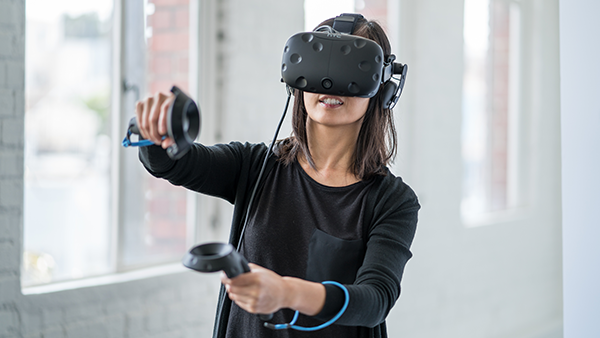
Whether it’s trying on lipstick or clothing online, using floor plan software to find out how furniture will fit in a new home or ordering a contactless Coke using a cell phone, businesses are continually finding new ways to promote their products and services using extended reality technology.
Investment in augmented and virtual reality — together known as mixed or extended reality, or XR — is expected to mushroom in the coming years: from $10 billion in 2019 to $62 billion in 2027 for augmented reality, and from $8 billion in 2020 to $100 billion in 2024 for virtual reality, according to Grand View Research.
So are the opportunities for those advertisers who would use the technology to manipulate, deceive and even cause harm to consumers, School of Information researchers say.
In a study highlighted at the recent Conference on Human Factors in Computing Systems, the University of Michigan researchers studied the possible ways advertisers could manipulate the public, using scenario construction to investigate potential future manipulative XR advertisements and their harms. They came up with seven scenarios: military games, ugly furniture, fake relatives, political alternate reality, pervasive T-shirts, deodorant crush and hunger pains.
The team identified five key mechanisms of manipulative XR advertising: misleading experience marketing; inducing artificial emotions; sensing and targeting people when they are vulnerable; emotional manipulation through hyper-personalization (ads made just for an individual); and distortion of reality.
